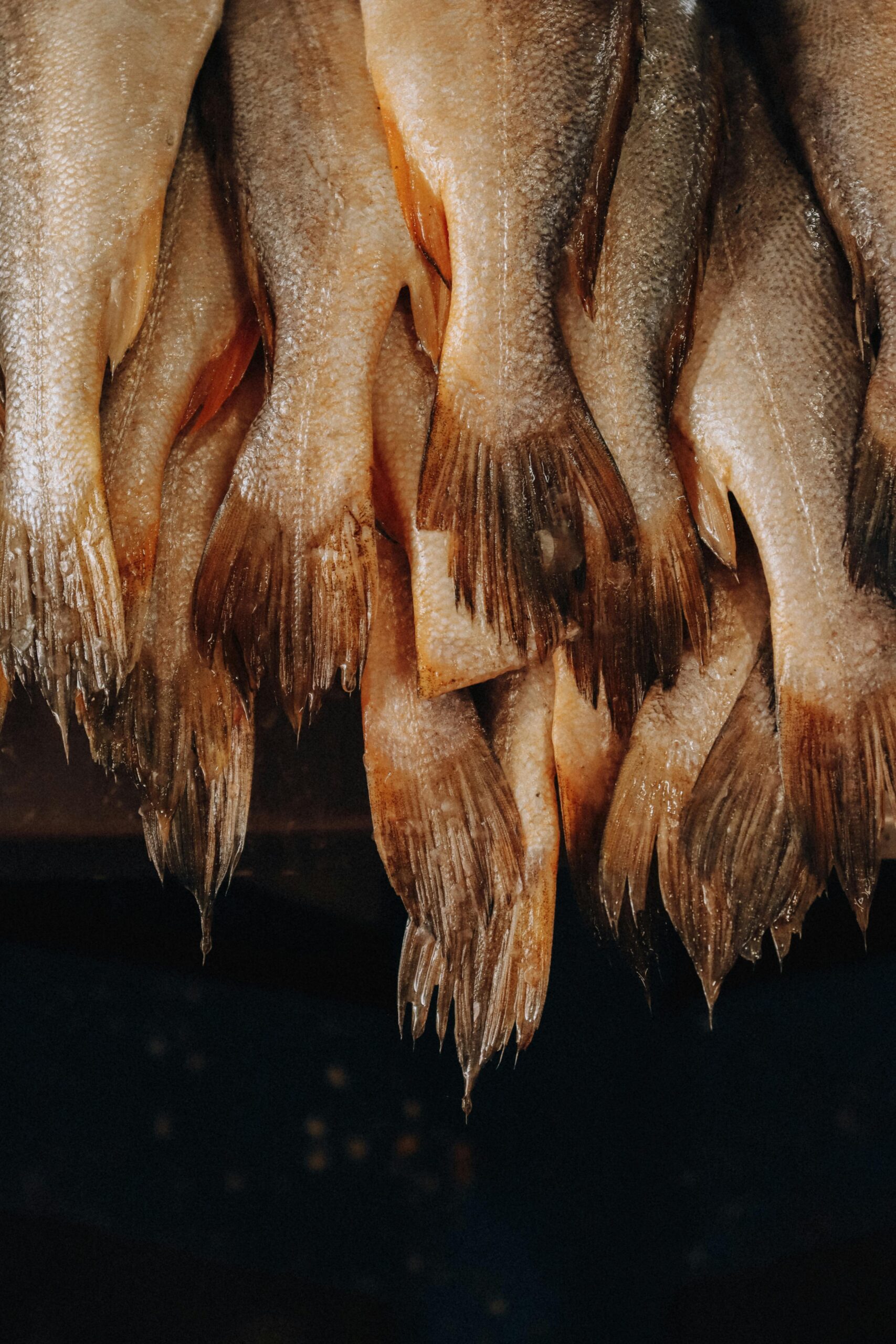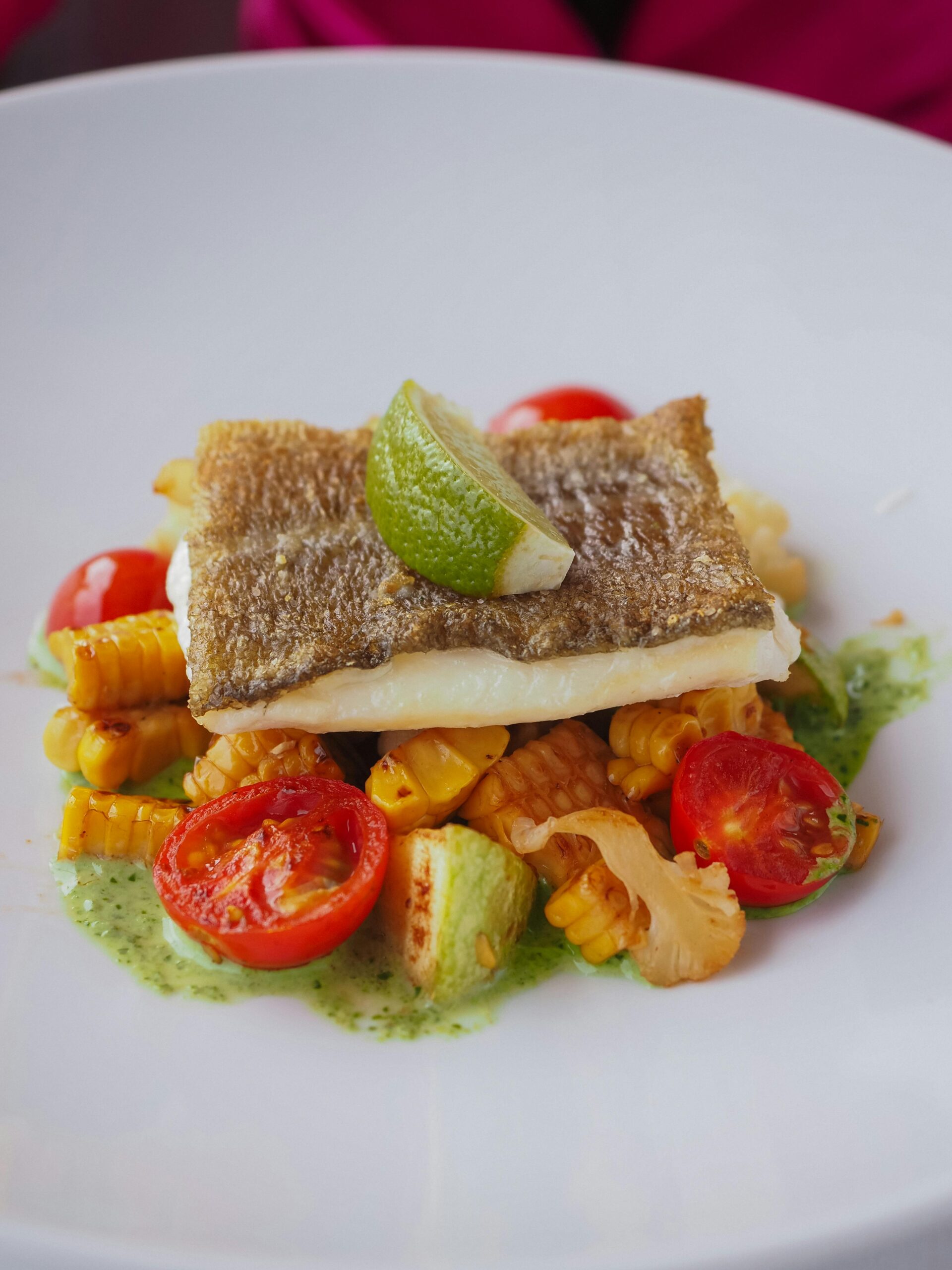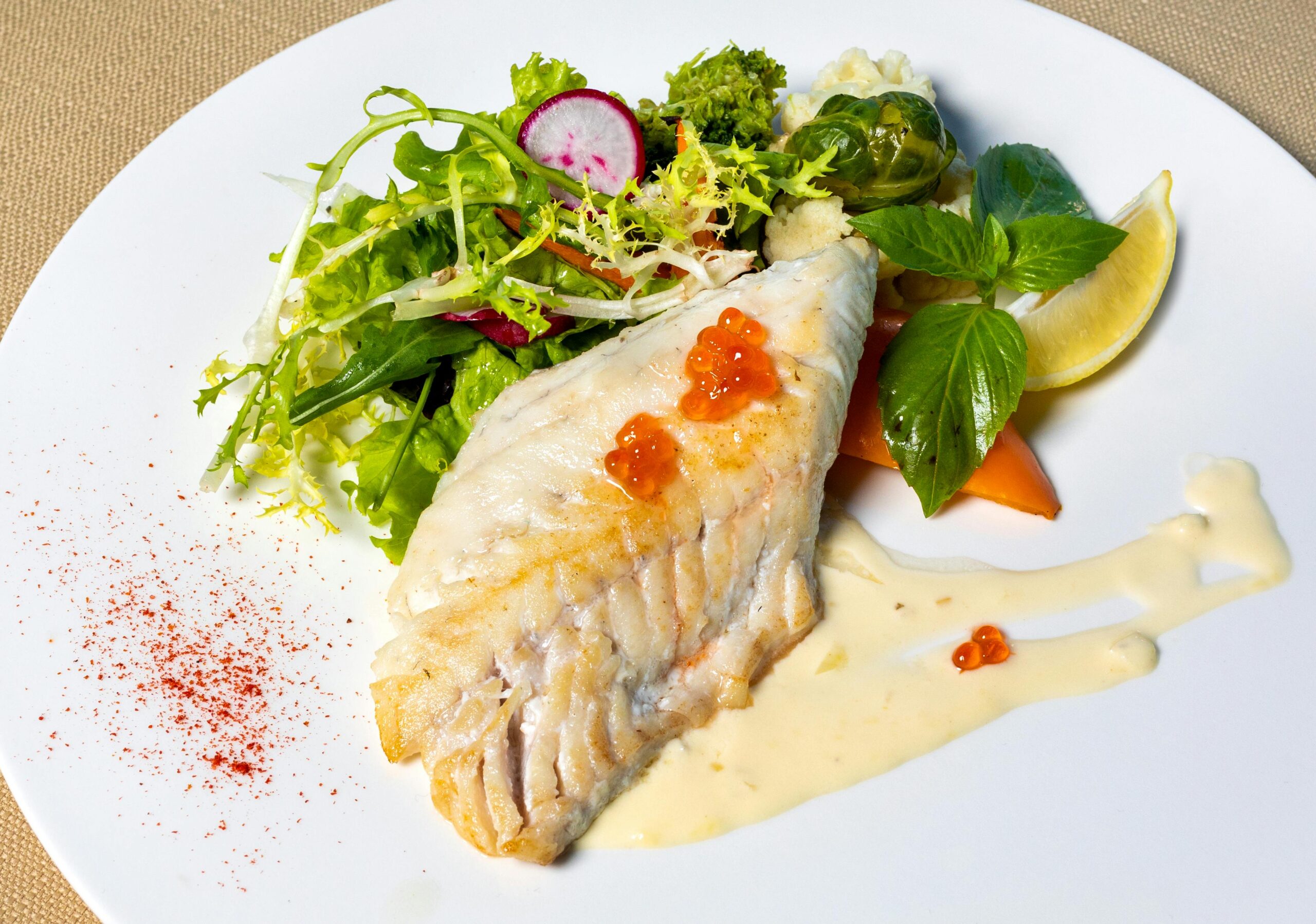Just three letters:
Cod

The life
Born from a tiny, translucent egg drifting in the cold, dark waters of the North Atlantic, a cod begins its life as part of the vast plankton community. It is one of millions of siblings, a small fraction of which will survive the journey to adulthood. As a juvenile, it seeks shelter in seaweed beds or rocky crevices, feasting on small crustaceans and other invertebrates. Its mottled brown and green skin provides perfect camouflage against the ocean floor. As the cod grows larger, its diet expands to include other fish, such as herring and capelin. It becomes a tireless hunter, navigating the depths with its strong fins and keen senses. The cod can grow to impressive sizes, sometimes weighing over 200 pounds, though such giants are now rare. It travels in large schools, migrating to and from its spawning grounds in a cycle as old as the ocean itself. The cod’s journey often ends in the wide nets of a fishing trawler. The large vessels, equipped with sonar and advanced fishing gear, can catch thousands of pounds of fish in a single haul. Once on board, the cod are sorted, cleaned, and packed in ice to preserve their freshness. They are then transported to processing plants on shore, where they are filleted, deboned, and prepared for sale. A significant portion of the catch is frozen, salted, or dried, a process that has been used for centuries to preserve the fish for long-distance transport. The versatility of the cod makes it a popular food source around the world. In the past, it was a staple food for communities in coastal regions, particularly in Northern Europe. The Vikings, for example, relied on dried cod, known as stockfish, for their long sea voyages. It was a crucial source of protein and was so valuable it was used as a form of currency. The Basques and Portuguese were also pioneers in the cod trade, their fishermen venturing to the Grand Banks of Newfoundland in the 15th century to fish for the abundant cod there. Their methods of salting and drying the fish allowed them to bring their catch back to Europe and establish a thriving trade that shaped global economies. Today, cod remains a culinary favorite, featured in classic dishes like fish and chips, bouillabaisse, and various seafood stews, a testament to its enduring role in human history and diet. A fish that we like so much.


The dishes
Cod’s mild flavor and flaky, tender texture make it a versatile fish used in countless culinary traditions. It is a popular choice for classic dishes like fish and chips, where its firm white flesh holds up well to a crispy batter. It can also be baked with simple seasonings like garlic, lemon, and herbs for a light and healthy meal. Other preparations include pan-searing to create a beautiful crust, or using it in stews and chowders where it absorbs the flavors of the broth without falling apart. Salt cod, or bacalao, is a celebrated ingredient in many cultures, particularly in Portugal, Spain, and the Caribbean, where it is rehydrated and used in fritters, salads, and casseroles. The cod’s liver is also processed to produce a highly nutritious oil rich in vitamins and omega-3 fatty acids. In the Lofoten Islands of Norway, cod is more than just a food source; it is the lifeblood of the economy and a central part of the region’s cultural identity. Every year, from January to April, the world’s largest seasonal cod fishery takes place when the “skrei,” a specific type of migratory cod from the Barents Sea, arrives at its spawning grounds around the islands. This annual event, known as the “Lofotfiske,” has shaped Lofoten’s history for centuries. The production of “tørrfisk,” or stockfish, which is cod dried on large wooden racks in the open air, is particularly important. Lofoten’s unique climate, with cool, stable temperatures and salty ocean air, is perfect for producing this high-quality, long-lasting product. The trade of stockfish has been a cornerstone of Norway’s economy since the Middle Ages, with Italy being a major export market. Today, while modern fishing methods have reduced the number of fishermen, the cod fishery still provides the main income for thousands of people in Lofoten and supports a vibrant industry of processing plants and related businesses. The traditional fisherman cabins, once built to house visiting fishermen, now serve as a link to this history, with many converted into accommodations for the growing number of tourists drawn by the region’s natural beauty and rich fishing culture.

